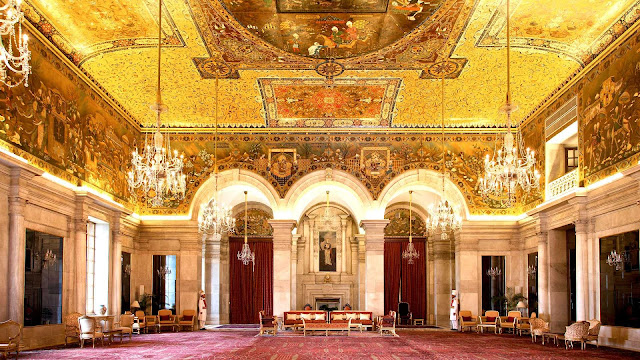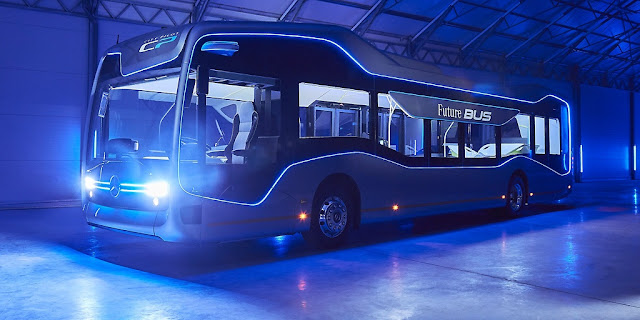Rashtrapati Bhavan is the residence of the paramount person of the country. Rashtrapati Bhavan (President House) was earlier known as Viceroy's House. Rashtrapati Bhavan is located at the west end of Delhi and there are 340 rooms in this huge building. Rashtrapati Bhavan, which is the official residence of the President of the country, consists of reception hall, state office, tennis court, cricket ground, children's playground, polo playing ground, staff residence and Mughal Gardens at the back of the building. Rashtrapati Bhavan is a sprawling 330-acre property spread over an area of 5 acres and has an H-shaped structure.
Pradeep10.redbubble.com
Rashtrapati Bhavan was built during the British rule as the residence of the Viceroy and Governor General of India. The structure represents versions of classical design from the 1950s. Rashtrapati Bhavan was based on Raisina Hills and its passage entryway is named Prakash Veer Shastri Avenue Gate 35. Rashtrapati Bhavan is located in the center of Delhi which was earlier known as 'Luty's Delhi'.
The building served as the residence of the Viceroy of India until India was declared an independent country. The capital of India was shifted from Kolkata to Delhi and a residence was built for the Governor General of India. The responsibility for the construction and design of Rashtrapati Bhavan was handed over to Edwin Landseer Lutyens and he shared the blue print of his design with Herbert Baker. About 17 years had passed in the construction of Rashtrapati Bhavan. So let's know the history of Rashtrapati Bhavan and other important information –
1. History of Rashtrapati Bhavan –
Looking at the history of Rashtrapati Bhavan, we see that in December 1911 it was decided to make a residence for the British Viceroy and the capital was shifted from Kolkata to Delhi. About 400 acres of land was acquired for the construction of the Viceroy's House or presently Rashtrapati Bhavan. It is said that during that time Raisina and Malcha villages were shifted which were settled there.
2. Structure of Rashtrapati Bhavan –

Rashtrapati Bhavan is a huge four-storey building with 340 rooms, 200,000 square feet of floor space, one billion bricks and 300,000 cu feet of stones. The building was done during the time of Edwardian Baroque. The design and construction process of this mansion was long, complicated and politically entangled. All of Lutyens' early designs were a mixture of classical and completely European styles.
Many Indian elements have been incorporated in Rashtrapati Bhavan. Several circular stone basins were incorporated at the top of the building. The building also had a traditional Indian chuja or chhaja which was installed as a mural in classical architecture. Which was 8 feet high and blocked the strong sunlight coming from the windows and the water coming in the rainy season. There are elephant sculptures on the outer walls of the building. At the entrance you will find cannon, cobra elephant and fountain sculptures, besides bas reliefs created by British sculptor Charles Sergeant Jagger. There is an amazing crown on the top of the building. There are also screens pierced with sandstone in Rajasthani design which is known as Jaliya.
There are 12 huge pillars in the east direction in front of the palace. The capital also sees a fusion of acanthus leaves along with four pendant Indian bells. The bells here are similar in style to Indian Hindu and Buddhist temple bells, inspired by the Mudabari Jain temple in Karnataka state. There are bells on each corner at each vertex above the pillar. It took 17 years for the completion of this building and 18 years for India's independence, even after this, till 1950 this place was known as the residence of the Viceroy. Since 1950 it is known as Rashtrapati Bhavan.
3. Interior of Rashtrapati Bhavan –
The Rashtrapati Bhavan is internally divided into three parts. So let us keep knowing about these three parts one by one.
Circuit 1: This part of the palace covers the Rashtrapati Bhavan and its central lawn. Tourists can visit the forecourt and see the main rooms of the main building. Banquet Hall, Durbar Hall, North Drawing Room, Ashoka Hall, Library, Navachar, Long Drawing Room, et al are included in the palace. A piece of Rashtrapati Bhavan is open for travelers on Thursdays, Fridays, Saturdays and Sundays.
Circuit 2: This part of the palace houses the Rashtrapati Bhavan Museum Complex which is also known as RBMC. RBMC consists of three separate buildings, mainly stables, garage and clock tower etc. The stables were dedicated to the nation on 25 July 2014 while the garage was inaugurated on 25 July 2016. The museum built in the building displays some beautiful and attractive artifacts. Which are a symbol of culture, art, heritage and ancient history. This part of Rashtrapati Bhavan is open every day except Mondays.
Circuit 3: This part of Rashtrapati Bhavan preserves the Mughal Gardens and other gardens. Who does not know about the world famous Mughal Garden located behind the building and the flower treatment in it. Apart from this, the Musical Garden, Herbal Garden and Spiritual Garden attract tourists here. This part of Rashtrapati Bhavan is open from Thursday to Sunday from August to March.
4. When does Rashtrapati Bhavan open –

Tourists are allowed to enter Rashtrapati Bhavan from 9:00 am to 4:00 pm, during which time its entrance remains open. Tourists will have to book online to enter Rashtrapati Bhavan without online booking are not allowed inside.
5. Entry fee for visiting Rashtrapati Bhavan –
To enter Rashtrapati Bhavan, a fee of Rs 30 per person has to be paid. If tourists go in groups of 30 persons then 1200 fee will have to be paid with 20% discount. Apart from this, in addition to 1200, 50 rupees per person has to be paid for going in a group of more than 30 people. There is no section expense for youngsters under 8 years old.
6. Permission to carry mobile in Rashtrapati Bhavan –
Keeping in mind the security in Rashtrapati Bhavan, mobile phones are not allowed to be carried. Because such a step has been taken because of the camera installed in the phone. The mobile is kept switched off. However you can take photos outside the building.
7. Best time to visit Rashtrapati Bhavan –
Apart from visiting Rashtrapati Bhavan, there are many tourist places in Delhi to visit near it. Where you can go for a walk and make your trip memorable. So let us tell you about some attractive places around Rashtrapati Bhavan.
Red Fort
India Gate
Qutub Minar
Jantar Mantar
Humayun's Tomb
Akshardham Temple
Chhatarpur Temple
iskcon temple
Lotus Temple Delhi
9. Where did you stop near Rashtrapati Bhavan?
If you want to stay here for a few more days after making a wonderful visit to Rashtrapati Bhavan. So let us tell you the names of some hotels in Delhi near the building.
Le Meridien New Delhi
Hotel The Royal Plaza
Taj Mahal Hotel
The Park New Delhi
Hotel Alka Classic
10. How to reach Rashtrapati Bhavan –
Rashtrapati Bhavan is located in Delhi, the capital of India, so you can choose between flight, train and bus to reach here.
10.1 How to reach Rashtrapati Bhavan by Flight –
If you have chosen the air route to reach Rashtrapati Bhavan, then let us tell you that Delhi, the capital of India, is very well connected to all the major cities inside and outside the country through domestic and international flights. New Delhi's "Indira Gandhi International Airport" serves national and inter-national flights. From the airport, you will reach Rashtrapati Bhavan by bus, metro and local means that run here.
10.2 How to reach Rashtrapati Bhavan by Train –
If you have chosen the rail route to reach Rashtrapati Bhavan. So let us tell you that Delhi is connected to all the major cities of India through railway network. The three major railway stations of Delhi are New Delhi Railway Station, Old Delhi Railway Station and Hazrat Nizamuddin Railway Station. You can choose any of these.
10.3 How to reach Rashtrapati Bhavan by Bus –
If you have chosen a bus to go to Rashtrapati Bhavan. So let us tell you that the city of Delhi is connected to the major cities of India through road. Three major bus stands in Delhi include Inter State Bus Terminus (ISBT) at Kashmere Gate, Sarai Kale Khan Bus Terminus and Anand Vihar Bus Terminus.
In this article, you have to know important information related to Rashtrapati Bhavan, how did you feel about this article of ours, definitely tell us in the comments.
Also read
Travel Fatehpur Sikri Tourism
Cinque Terre: The Ultimate Holiday Destination In Italy
The Yellowatone National Park





Comments
Post a Comment
Please do not enter any spam link in the comments box.